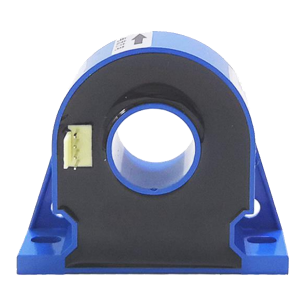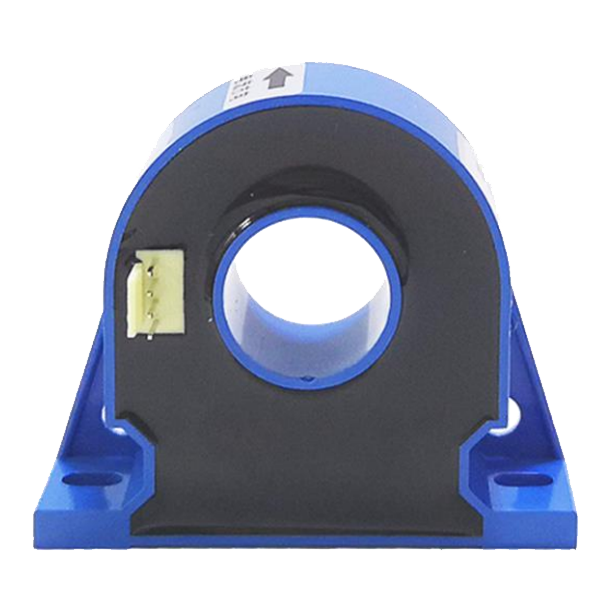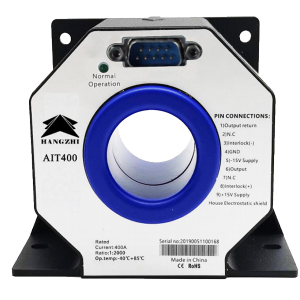Hall Effect Current Transducers and Fluxgate Current Transducers are two significant players in the realm of current measurement technologies. These two technologies have revolutionised the way we measure and monitor currents, with each possessing its own distinct characteristics and benefits. In this article, we will explore the differences between these two remarkable current transducer technologies, casting light on their working principles, applications, and key differences.
Learn more about the fluxgate current sensor.

Learn more about the hall effect current sensor.
Hall Effect Current Transducers: A Glimpse Into the Hall Phenomenon
Hall Effect Current Transducers measure electrical currents in a conductor by utilising the fascinating Hall effect phenomenon. The Hall effect, discovered by Edwin Hall, is the generation of a voltage difference across a conductor when subjected to a magnetic field perpendicular to the direction of current flow. The interaction between the magnetic field and the electrons conveying the current generates a voltage known as the Hall voltage, which is directly proportional to the magnitude of the current.
Operating Principle and Benefits:
Principle: Hall effect sensors, which are typically composed of semiconductor materials, are positioned perpendicular to the magnetic field produced by the current. The Hall voltage is generated and detected as the current flows, providing an accurate representation of the current.
Advantages: Hall Effect Current Transducers provide non-intrusive measurements, meaning no electrical contact with the conductor is required. They ensure safety by providing galvanic isolation and averting ground loops. These transducers are versatile in that they can measure AC and DC currents over a broad range.
Fluxgate Current Transducers: Harnessing the Power of Magnetic Hysteresis
The Fluxgate Current Transducers rely on the hysteresis characteristics of magnetic materials to operate on a different principle. In these transducers, a magnetic core endures magnetisation changes when subjected to the magnetic field of the current. The resulting variations in magnetic flux are detected and quantified to ascertain the magnitude of the current.
Operating Principle and Benefits:
Principle: The core of the fluxgate sensor, which is composed of nonlinear magnetic materials, experiences magnetisation variations in response to the current-induced magnetic field. The detected alterations are then converted into current measurements.
Advantages: The Fluxgate Current Transducers are renowned for their exceptional precision and linearity, particularly when measuring low currents. They are frequently used in applications that require precision and dependability.
Distinguishing Factors: Hall Effect vs. Fluxgate Transducers
While both Hall Effect and Fluxgate Current Transducers are intended to detect current, they differ in key ways:
Working Principle: The Hall voltage generated by the interaction of the magnetic field and current-carrying electrons is what drives Hall Effect transducers. Fluxgate transducers, on the other hand, take use of magnetisation variations in a magnetic core caused by the magnetic field of the applied current.
Accuracy & precision: Fluxgate current transducers are well-known for their great precision and linearity, making them suitable for precise low-current measurements. Hall Effect transducers are also accurate, although Fluxgate transducers thrive in applications requiring extreme precision.
Current Range: Hall Effect transducers have a wider current range, allowing them to handle both low and high currents. Fluxgate transducers are commonly utilised at low current levels when precision is critical.
Size and Complexity: Hall Effect transducers are often smaller and easier to design. Because of the specialised core material and extensive circuitry, fluxgate transducers can be bigger and more complex.
Finally, both Hall Effect and Fluxgate Current Transducers have advantages and applications. Fluxgate transducers give great precision in low-current measurements, whereas Hall Effect transducers provide adaptability and galvanic isolation. Choosing the proper transducer is dependent on the application’s unique requirements, accuracy requirements, and required current range.
With a thorough awareness of the differences between these two technologies, you’ll be able to make an informed decision based on the specific demands of your present measuring requirements. So, whether you’re using a Hall Effect or a Fluxgate transducer, you’ll be able to ensure accurate and dependable current measurements in a wide range of applications.
Get in touch with our experts
Contact us directly via email info@hangzhiprecision.com or fill out the form below. We will respond as soon as possible.


